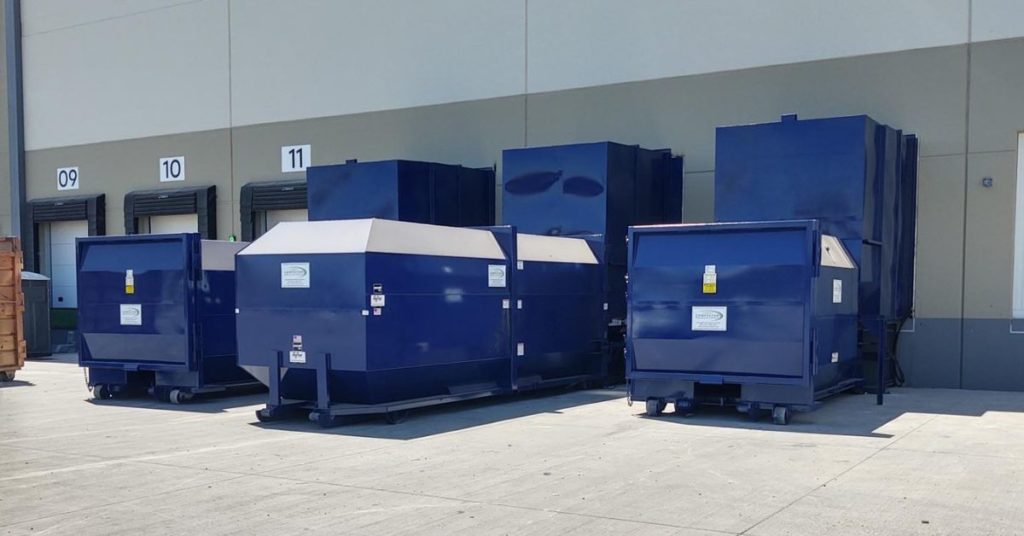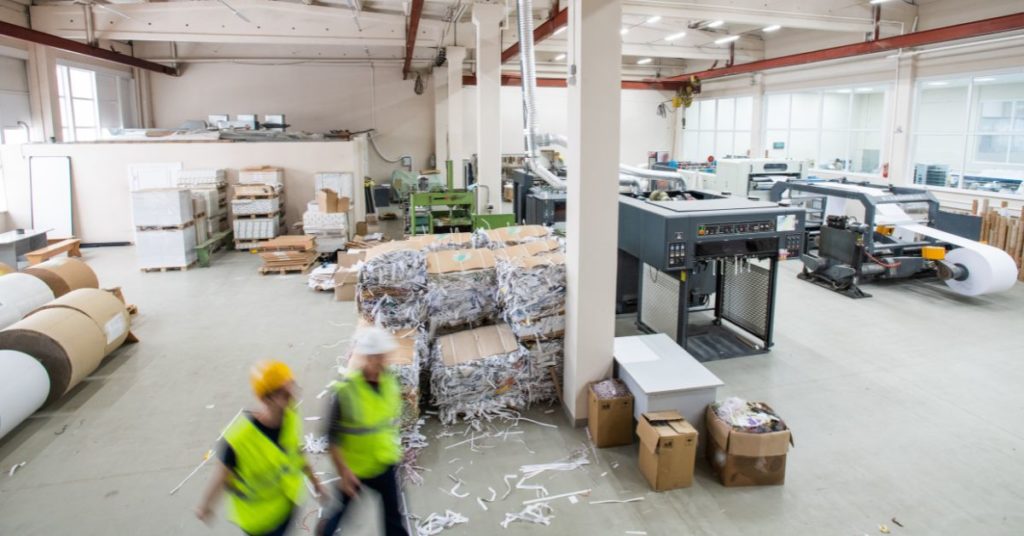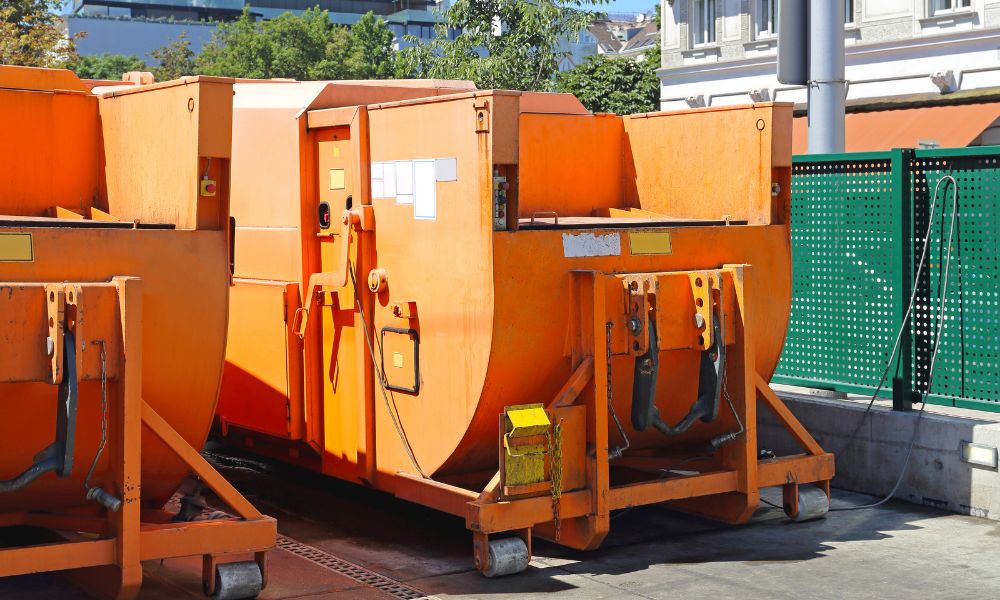Effective waste management isn’t just about protecting the environment; it’s also about boosting your bottom line and ensuring regulatory compliance. Businesses that adopt sustainable waste practices lower operational costs, enhance their reputation, and minimize liability risks. Here, we’re exploring what comes from creating and implementing a waste management program for your business and why this is essential for success.
The First Steps in Creating a Waste Management Program
The first step in creating a successful waste management program is to set clear goals. Define what you hope to achieve, whether it’s cutting costs, reducing landfill contributions, or meeting sustainability benchmarks. Assign a point of contact to oversee the program, ensuring accountability throughout.
Next, identify any compliance requirements that pertain to your industry or region, as this will inform how you structure your program. A comprehensive action plan aligned with your goals sets the foundation for sustainable waste practices.
Assess Your Current Waste Production
Before implementing changes, it’s vital to understand your starting point. Conduct a waste audit to evaluate how much waste your business produces, the types of waste generated, and how it’s currently being managed. For accurate results, perform audits in key areas, such as offices, production lines, or storage facilities.
Break down your waste into categories, including recyclables, nonrecyclables, hazardous waste, and organics. This data highlights inefficiencies and guides your program’s direction. For example, you might discover opportunities to reduce costs by composting food waste or recycling scrap materials.
What Types of Waste Management Programs Can You Implement?
The type of waste management program you implement depends largely on your industry and waste production profile. Retail businesses may focus on reducing packaging waste, while industrial facilities might benefit from waste-to-energy programs.
Common strategies include reduce, reuse, recycle initiatives, introducing eco-friendly materials, and setting up centralized waste sorting stations. Evaluate different programs carefully and select ones that align with your sustainability goals and operational needs. Pilot programs are a practical way to test feasibility before a full-scale launch.

Integrate Recycling Into Your Waste Program
Recycling forms the backbone of many waste management initiatives and yields tremendous benefits for a business. Begin by identifying recyclable materials in your waste stream, such as paper, metals, plastics, and glass. Partner with reliable recycling vendors who can process these materials.
Make recycling convenient by placing clearly labeled bins in accessible areas and educating employees on what they can and cannot recycle. Advanced equipment like horizontal baler machines play a pivotal role, compressing materials like cardboard or plastic into manageable bales for efficient transport and recycling.
What Role Does Composting Play in Waste Reduction?
Composting offers a great solution for businesses that generate organic waste, including food industries, offices with cafeterias, and landscaping companies. By diverting food scraps and yard waste from landfills, you cut down methane emissions and transform waste into nutrient-rich compost. Set up a composting station or connect with local composting facilities to manage your organic waste.
If commercial composting isn’t feasible, on-site systems might work well for small to medium-sized operations. Composting also aligns with corporate social responsibility efforts and demonstrates environmental commitment to stakeholders.
Choose the Right Waste Management Equipment
Selecting the right equipment is critical for an efficient waste management program. Start by assessing the waste types and volumes your business handles regularly. If your organization generates a high volume of cardboard, paper, or plastic waste, a horizontal baler machine is an excellent investment.
Such machines compact materials to facilitate easy storage and transport, lowering disposal costs and improving recycling outcomes. Additionally, consider investing in shredders for document disposal or bins tailored for hazardous waste to ensure compliance with industry standards.
Train Employees on Waste Management Procedures
Employees are key players in implementing a successful waste management program, but they must be well-informed to make a meaningful impact. Conduct regular training sessions to educate staff about waste handling, sorting processes, and the program’s overall objectives. Explain how to use new equipment, such as balers or special recycling bins, and where to dispose of specific materials.
Clear signage and easy-to-access educational materials can also reinforce proper waste management habits daily. When employees understand the why behind the program, engagement and compliance rates significantly improve.

Best Practices for Waste Storage and Collection
Efficient waste storage and collection practices streamline operations and ensure safety and compliance. Store waste in designated, clearly labeled containers to avoid cross-contamination. Schedule regular collection times to prevent overflow and odors, especially in high-waste industries like hospitality or manufacturing.
Store hazardous materials separately in compliance with regulations, using reinforced containers and designated disposal units. For large-scale operations, store baled recyclables compactly until pickup, minimizing storage requirements while maximizing volume efficiency.
Measure the Success of Your Waste Management Program
Setting measurable benchmarks allows you to track the success of your waste management program and identify areas for improvement. Metrics, such as waste diversion rates, cost savings, and employee engagement, provide valuable insights. Use tracking software to monitor key performance indicators (KPIs) and conduct regular audits to compare current results against your goals.
Feedback from employees and waste vendors will also highlight areas where fine-tuning is necessary. Celebrate milestones to motivate your team and reinforce a culture of accountability and sustainability.
Stay Compliant With Waste Management Regulations
Compliance with regulations is nonnegotiable for any waste management program. Stay up to date on local, state, and federal requirements, particularly if you handle hazardous or electronic waste. Periodically consult with environmental compliance experts to ensure your processes adhere to the latest standards.
Partnering with licensed waste vendors and maintaining detailed documentation of your waste disposal activities will safeguard your business against violations and liabilities. Proactively addressing compliance will also improve your reputation and foster trust among customers and stakeholders.
Sustainable Waste Management for a Better Business and Planet
Implementing a comprehensive waste management program ensures long-term benefits for your business, employees, and the environment. Whether you’re a small retail operation or a large-scale facility, the steps outlined above provide the foundation for success.
By integrating recycling, composting, and the right waste equipment, you’ll improve efficiency and reduce disposal costs while aligning yourself with sustainable practices that resonate with today’s eco-conscious consumers. Create and implement a waste management program today and leave a lasting positive impact for your business and the planet.


